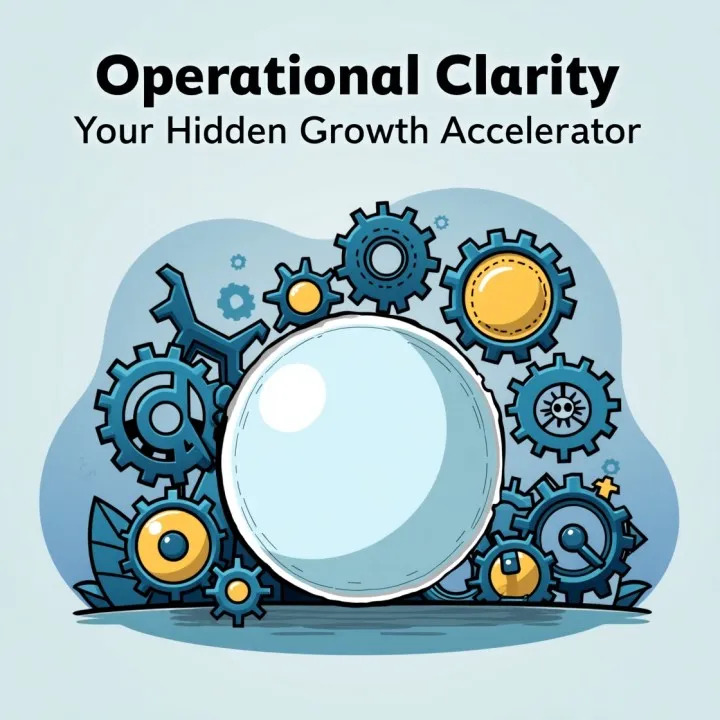In today’s fast-paced business environment, leaders are constantly chasing better results—more productivity, greater efficiency, stronger performance. But too often, the problem isn’t a lack of effort. It’s a lack of clarity.
What I see in many organizations, especially those in growth mode, isn’t a talent issue or a resource gap—it’s operational fog. And that fog is expensive.

🚫 The Cost of Operating in the Dark
When teams lack clarity, here’s what happens:
Employees spin their wheels on conflicting priorities
Decisions get delayed or made without alignment
Duplicate work and miscommunication become the norm
Leaders get pulled into the weeds to compensate
The result? Burnout. Missed goals. Stagnation.
And yet, this problem often goes undiagnosed—because everyone’s busy. But busy doesn’t equal progress.
✅ What is Operational Clarity?
Operational clarity means your people know:
What matters most right now
Who owns what (and why)
How to get things done efficiently
Where they’re going and how success is measured
It’s the connective tissue between your strategy and your day-to-day execution. It creates confidence, direction, and accountability—at every level of your organization.
At Bannister Business Solutions, restoring operational clarity is one of the first things I do when stepping in as a Fractional COO. Before optimizing workflows or scaling operations, we pause and get clear.
Because clarity isn’t optional—it’s a growth prerequisite.
🔍 Signs You Need Operational Clarity
You may be facing an operational clarity gap if:
Your team is busy but key projects stall
There’s confusion over roles or ownership
You’re constantly chasing status updates or redoing work
Team members struggle to connect their tasks to bigger goals
If that sounds familiar, don’t panic. The solution doesn’t require massive restructuring. It requires focus.
🛠 How to Create Operational Clarity (Starting Today)
Here are 3 practical steps you can take this week:
1. Set Clear Intentions for Every Meeting
Start each meeting with two questions:
“What are we here to decide?” and “What does success look like?”
2. Visualize Priorities for Everyone
Create a simple task board (using Notion, Asana, Trello, etc.) that highlights weekly company priorities—visible to all departments.
3. Walk Through One Workflow Together
Pick a recurring process (e.g., client onboarding) and map it with your team. Where do handoffs drop? Where’s confusion or delay? Fix one step.
These small shifts build momentum—and momentum creates results.
💡 Final Thought
Operational clarity is not a buzzword. It’s your competitive edge. When people know what matters and how to move forward, your organization accelerates—without chaos or burnout.
You don’t need more meetings, more tech, or more talent. You need clarity, ownership, and aligned execution.
If your organization is growing but feeling stuck, let’s talk. You may not need a full-time COO—you may just need a clear path forward.
—
Kimberly Bannister
Founder, Bannister Business Solutions
Fractional COO | Operations Strategist
📩 Schedule a strategy call
🌐 www.bannisterbusinesssolutions.com

